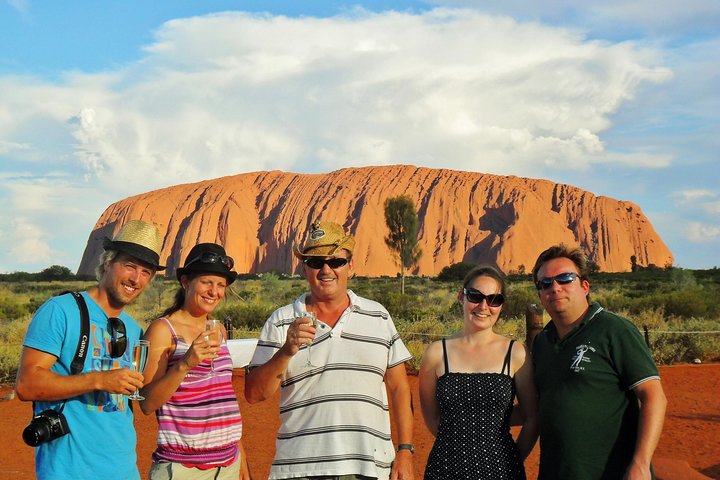Exploring the Sacred Landscapes of Uluru and Kata Tjuta: A Day Trip to Remember
Drawn by the allure of Uluru and Kata Tjuta, I embarked on a day trip from Alice Springs to explore these iconic landscapes. Join me as I delve into the rich cultural heritage of the Anangu people and witness the breathtaking beauty of the Australian outback.
A Journey Through the Heart of Australia
The allure of Uluru and Kata Tjuta has long captivated travelers seeking to connect with the ancient landscapes of Australia. As someone who has dedicated much of my life to promoting sustainable tourism, I was eager to experience the Ayers Rock Day Trip from Alice Springs. This journey promised not only breathtaking views but also an opportunity to delve into the rich cultural heritage of the Anangu people.
Our day began with a stop at the Erldunda Desert Oaks Resort, where the emus roamed freely, a reminder of the unique biodiversity of this region. The air-conditioned comfort of our coach was a welcome respite from the desert heat, and our driver, a charismatic figure with long blond hair, set the tone for the day with his engaging stories. His passion for the land was infectious, and it was clear that he was more than just a guide; he was a steward of this sacred place.
As we approached Uluru, the sheer magnitude of this monolith took my breath away. Our first stop allowed us to capture the iconic silhouette against the backdrop of a salt lake, a scene that seemed almost otherworldly. The landscape here is a testament to the power of nature, and I was reminded of the importance of preserving these natural wonders for future generations.
Immersing in Aboriginal Culture
The next leg of our journey took us to Kata Tjuta, where we ventured into the Walpa Gorge. The towering domes of Kata Tjuta are as awe-inspiring as Uluru, and walking through the gorge, I felt a profound connection to the land. Our guide shared stories of the Dreamtime, the creation myths of the Anangu people, and I was struck by the deep spiritual significance these sites hold.
At the Uluru-Kata Tjuta Cultural Centre, we had the chance to learn more about the local Pitjantjatjara people. The centre itself, constructed with 90,000 mud bricks, is a marvel of sustainable architecture, blending seamlessly with the landscape. Here, I was able to purchase some locally made souvenirs, knowing that my contribution would support the community.
Our guided walk at Uluru took us to the Mutitjulu Waterhole, a serene spot that has sustained life in this arid environment for centuries. The rock art in the caves told stories of the past, and I was reminded of the delicate balance between tourism and conservation. It’s crucial that we, as travelers, respect these sacred sites and support efforts to protect them.
Sunset Splendor and Reflections
As the day drew to a close, we gathered at the sunset lookout to witness the changing colors of Uluru. With a glass of bubbly in hand, I watched as the rock transformed from ochre to deep red, a spectacle that left me in awe. The accompanying BBQ dinner was a delightful end to the day, offering a taste of traditional Aussie fare under the vast desert sky.
While the tour was a remarkable experience, it wasn’t without its challenges. The lack of allocated seating on the coach meant that some families were separated, and language barriers made it difficult for some to fully engage with the commentary. Additionally, the limited time at each site left me yearning for a deeper exploration, particularly at Walpa Gorge and the Uluru caves.
Despite these minor setbacks, the tour was a testament to the beauty and resilience of the Australian outback. It’s a reminder of why I continue to advocate for sustainable travel practices, ensuring that these landscapes remain unspoiled for generations to come. As I returned to Alice Springs, I carried with me not just memories of stunning vistas, but a renewed commitment to preserving the natural and cultural heritage of this extraordinary land.




